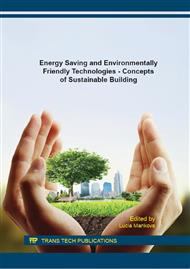p.148
p.156
p.164
p.172
p.180
p.188
p.199
p.210
p.218
The Operational and Environmental Consequences of the Polystyrene Insulation Disposal
Abstract:
In connection with the significant volume of polystyrene embedded in buildings as thermal insulation, in the next few years it will be needed to solve the matter of its disposal after the end of its life cycle. Hexabromocyclododecane (HBCDD) has been used as a flame retardant in polystyrene thermal insulation (EPS and XPS) for the last 50 years. The internationally recognized Stockholm Convention on Persistent Organic Pollutants prohibits future production, use and recycling of materials that contain HBCDD. It also, to a large extent, limits the options of waste management of such materials. European legislation, in particular Regulation (EC) No 850/2004 and the so called REACH Directive, established a binding legal framework for EU Member States which reduces waste management options of material containing HCDBB practically only to incineration. In the coming years, this fact requests fundamental changes in disposal of construction and demolition waste containing the polystyrene insulation and related processes on construction sites in the Czech Republic. The research is based on the analysis of the international and the Czech legislation related to this issue, and the analysis of material and technological context. The paper focuses on possible operational, economic, energy and environmental impact on the construction industry and environment, and compares the current situation in the Czech Republic with other European countries, and assesses the readiness of the Czech Republic to deal with the upcoming legislation changes.
Info:
Periodical:
Pages:
180-187
Citation:
Online since:
January 2016
Authors:
Price:
Сopyright:
© 2016 Trans Tech Publications Ltd. All Rights Reserved
Share:
Citation:


